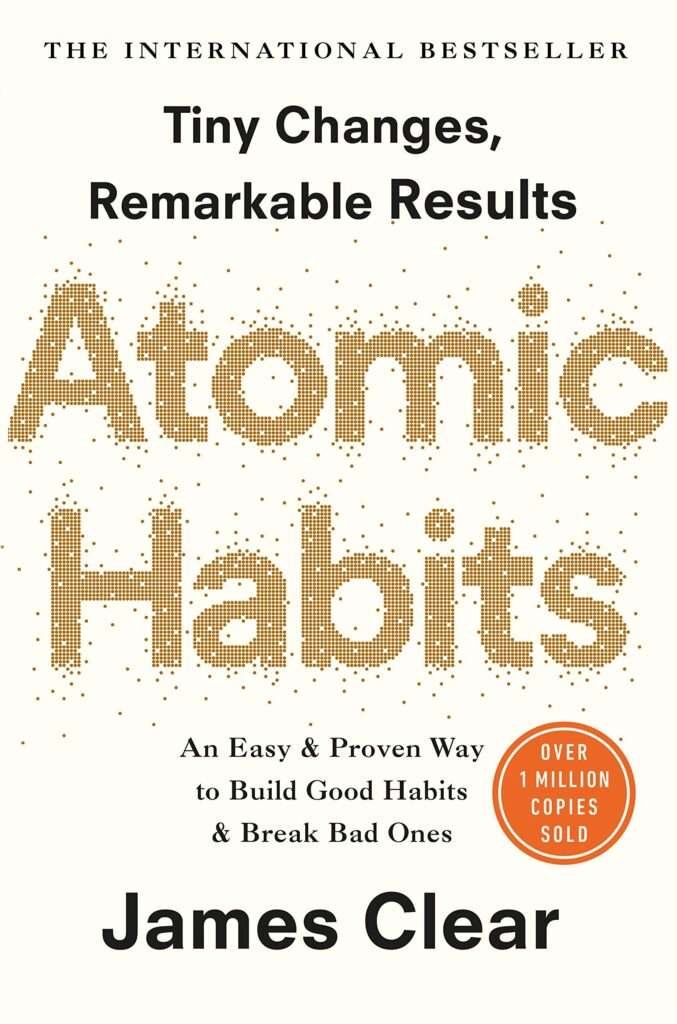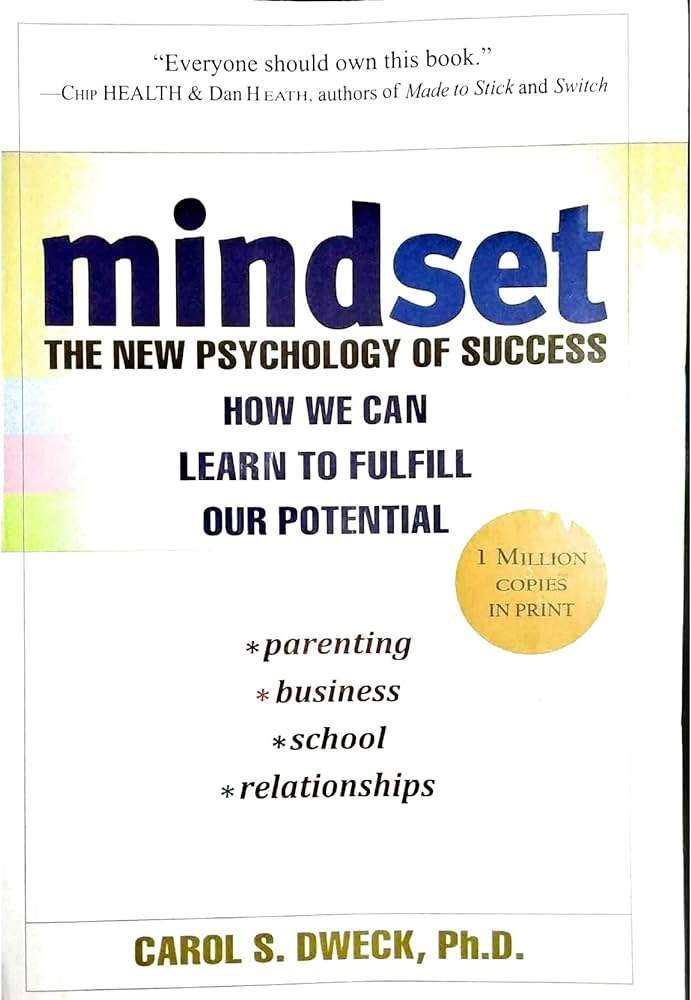Introduction
The first step in the educational process with respect to learning is establish goals for what you will learn. Goals help students to know where they are going, why they want to reach that destination(points them in some direction), and how their academic experiences will contribute to a larger plan of education (fit into individual or professional goals). If students establish specific, attainable ambitions they are able to direct their endeavours and monitor their development through the use of feedback all while achieving efficiency in order realize set goals. Teachers can most definitely guide students in how to set and meet these goals, leading them on a path toward academic success, personal growth, and the cultivation of life long learning. In this article, we look at five critical books that not only dispense insights but also give actionable strategies for learners and educators alike to set learning goals efficiently & effectively.

Setting Learning Goals
These five books are around setting learning goals and with practical solutions and research based stratergies for teachers as well as students.
1. “Grit: The Power of Passion and Perseverance” by Angela Duckworth
- Overview: In an excellent exploration of the attributes that contribute to success, Angela Duckworth introduces us (in her own words), to “The Power and Passion of Perseverance,” which she simply calls Grit. Although Duckworth believes that, in the grand scheme of things, talent is not what really drives success. In this book, Newkirk highlights the ways that meaningful long-term learning goals help students develop resilience and find a refusal to give up on their behalf.
- Key Insights:
- Long-range Planning: Duckworth is particularly attuned to the role of working toward out-of-reach goals targeting passions. By providing that guiding star, goals help keep students motivated and focused over the long term. According to Duckworth, students should avoid setting high goals that do not really resonate with their personal values or aspirations.
- Growth Mindset Grit: The book shows the course between development mindset and grit. Students who think of their abilities as something that can be developed by hard work and perseverance, on the other hand, are more likely to set high goals for themselves—and follow through with these ambitious plans. Duckworth advocates inspiring a growth mindset in students to encourage the development of grit, which can support success throughout life.
- Resistance to Setbacks: Duckworth explains how even bad days are an inevitable part of the process towards long-term success. The former is about having a goal, while the latter encompasses persevering through setbacks and failures to reach said goals. The strength that this resilience provides is incredibly important as students navigate toward both their academic and personal goals.
- Practical Application: Educators can simply use “Grit” principles to help students set long-term learning goals that are aligned with their passions and interests. Teachers can get students to cultivate works then, that grit — the idea of tenaciously sticking with a task and not quitting — which will service them far beyond SAT scores. For example, teachers can help students decompose their narrow-long-term goals into shorter strides so that they keep themselves motivated and do not lose track of the big picture.

2. “Atomic Habits: An Easy & Proven Way to Build Good Habits & Break Bad Ones” by James Clear
- Overview: Atomic Habits by James Clear is a how-to guide with the methods, strategies and tactics for small changes in habit that lead to remarkable results over time. Although it is not focused specifically on learning goals, the understanding of how habits shape our behavior can be very helpful in setting and accomplishing one. Clear states that students can lay out the foundation for long-term success, by developing a positive habit.
- Key Insights:
- The Power of Marginal Gains: Clear explains that it’s the little things you do—the small improvement, the tiny change—that add up to create massive transformation (which he calls “atomic habits”). Which helps in setting, and achieving learning goals as it threatens to assert itself so vehemently that we are never at peace with anything less than consistent daily progress. Much of Clear’s philosophy rests in the idea that making subtle changes, such as spending ten minutes a day on building a new study habit, is all you need to see immense change over time.
- Habit Stacking: Arguably the most first principle of all, Atomic Habits talks about habit stacking which is essentially to use existing habits as triggers for new routine. It is a strategy that can work to help students achieve learning goals as part of their daily life. A student could, for instance, link the new behavior of recalling notes to one that is already extant such as having a morning cup which would lead this routine more automatically and therefore carry out regularly.
- Identity-Based Goals: Clear discusses goal-setting — in alignment with our identity. For students this involves setting learning goals on aspects of their future identity, rather than simply what they want to achieve. Seeing as these goals are tied to identity and beliefs, students will be more invested in making progress on this goal which they have aligned with their sense of self.
- Practical Application: Using atomic habits, students and the educators can put these strategies into practice in order on building some good leaning also goals under those guidelines. For instance, students may form a habit of going over their notes just after each class or creating the daily time to study which will make sure that learning objectives are integrated into our lives on an everyday basis. This view can be teased out in another way by teaching students to mentally commit themselves towards an identity: one that nurtures their academic efforts.

3. “SMART Goals Made Simple: 10 Steps to Master Your Personal and Career Goals” by S.J. Scott
- Overview: In his book SMART Goals Made Simple, S.J. Scott guides you through a step by step process to set and achieve goals that are Specific, Measurable, Achievable, Relevant and Time-bound. The book gives practical tips to split large goals into small steps and make a plan. This structure can be an ideal approach for students looking to break down their academic aspirations in a systematic way, especially those who want help building pre-self-assessment faculty relationships.
- Key Insights:
- stablish Specific and Measurable Goals: Scott talks about the necessity to establish both specific, measurable goals that are trackable along with more general targets. And be specific: If you are a student, “improve math grades by 10% over the next semester,” rather than something like “do better in Math”
- Next Steps: Gives students a plan for turning goals into next steps to pursue knowledge with an end goal in mind. When students articulate an idea (like „do one more math problem every day”) they work and can also track their progress daily towards that goal.
- Deadlines & Time Management — Scott talks about how to be reasonable with your goals by setting a deadline and managing time effectively This means creating a timeline for each goal and seeing what may get in the way of you achieving them. Establishing deadlines helps in creating a sense of urgency and with that, motivation.
- Practical Application: Educators can work closely with students on creating identifiable objectives for learning using the SMART framework. This, in turn keeps students organized and motivated allowing them to reach their academic goals. An application might include a teacher helping a student make the following SMART goal: ‘read two chapters in history textbook each week and write out key points from these chpaters by friday’

4. “The 4 Disciplines of Execution: Achieving Your Wildly Important Goals” by Chris McChesney, Sean Covey, and Jim Huling
- Overview: The 4 Disciplines of Execution (4DX) is a great framework for any one who really wants to get important things done. An approach they take is around how to clearly define core outcomes and keep on track despite the daily chaos of work distractions. Designed for educators that are juggling several responsibilities and ambitious goals in their pursuit of an education!
- Key Insights:
- Prioritize Wildly Important Goals (WIGs): The book preaches of the importance to zero in on a few wildly important goals that will make all other processes irrelevant. This might suggest that students are focusing on prioritising central learning goals, which they believe will impact their outcomes. This way, students can focus their energy on working to achieve these WIGs in a systematic manner instead of spreading themselves too thin as mentioned earlier across multiple goals.
- 4DXLead and Lag MeasuresDIn 4DX, you have lead measures (behaviors driving success) and lag measures (outcomes). For example, if a student’s WIG is grades in one subject and has set the goal to improve them by studying more regularly, their lead measure would be consistent study hours per week (which leads to improved academic performance)and lag measure — number of completed assignments/tests/grades over 80. Lead measures keep students on track to accomplish their learning goals.
- The book emphasize on the importance of following up regularly and keeping you accountable for your goals (which is cadence). Whether that means organizing study groups, checking your progress regularly or simply doing some self-reflection. When you set a cadence of accountability, students are more likely to maintain their motivation and follow through on achieving their goals.
- Practical Application: 4DX Framework can be used by educators to help students do a little better-off at identifying and keeping focus over their most important learning goals. This allows for them to accomplish smaller goals in less time, and stay on track by tracking lead measures along with holding regular accountability check-ins. A teacher, for instance, may assist a student in identifying (as discussed above) a WIG (e.g. “mastering key algebra concepts”) and then support the pupil by recording lead measures concerning daily practice problems with him/her monitoring their progress continually throughout the term similarly.

5. “Mindset: The New Psychology of Success” by Carol S. Dweck
- Overview: Mindset by Carol Dweck — A growth mindset is the belief that abilities and intelligence can be developed; it is key to your personal development. In this book, we examine: The mindset students need to create deep learning experiences;The type of student and citizens you can develop in your classroom with a growth-centered approach. Its implications for education — that a growth mindset correlates with an increase in resilience, motivation and success, i.e. all the stuff we want our students to learn how to do better/outperform other people at or whatever Crucial Multi-Word Verb you would use starting from both those words/ outdo eachother!!!
- Key Insights:
- Mindset: The Psychology of Success by Carol Dweck describes the difference between students with a growth and fixed mindset as, those in the former group are more likely to set difficult goals for which they will work hard towards; these same individuals also view failures as chances to learn rather than reflect their own talent. The mindset encourages students to value hard work, welcoming challenges and new opportunities that help them grow.
- Embracing Challenges and Viewing Failure as Part of Learning: The book encourages students to embrace challenges — even if a task is difficult, the challenge makes us grow. So, this viewpoint allows students to have goals that really encourage them to get out of their comfort zone while aiming for something significant. Dweck contends that students who see failure as a normal aspect of learning are more likely to take risks and aim high.
- Dweck believes that to be great, one must continue being ever-great and grow over a lifetime; setting goals much like the Japanese term of Kaizen — less about achieving an endpoint but more on going along an upward trajectory together. This kind of approach creates a culture of continuous learning and self-improvement which can lead to impressive academic AND lifelong success.
- Practical Application:Teachers can use the concepts from “Mindset” when they are working with students to craft goals that have them balancing on their own edges in a way likely to foster growth. When students are taught to embrace failures as a learning experience, and that taking the time and effort is important for long-term academic goals; it perpetuates towards success stories like this one. One possible frame is how a teacher or other coach might turn an abysmal test score into a chance to correctly figure out what parts of the material were weak for that student, and set an action goal about “If you do x more problems in y chapter from study book z that will be taking place in your spare time during SAS” type.

Why We Need This?
Goals guide student effort and pique students’ interest in why they are engaged in a learning environment. Goals help give students direction to achieve their greatest potential, are able to channel it in a systematic approach and enable them keep track of things. Lacking clearly defined goals, students find it difficult to understand where their academic studies fit within the larger economy and can readily grow frustrated when hitting roadblocks. By creating relevant learning goals, students have authority over their academics and are more prone to succeed in both academic endeavors as well as personal plans.
How It Can Benefit Us? | Setting Learning Goals
The advantages are as follows:Effective Resolution of Goals
- Better Focus and Direction: When students have learning goals, they know what is important to learn so that they can put most of their efforts into those areas as opposed to being distracted by other things.spatial_restriction This focus help student to manage their time and energy more intelligent way which in turn gives them better result academically.
- Increased Accomplishment: When students know exactly what they want to achieve, it makes them motivated and focused on their studies which will enable him/her long term_CMPA endeavours. Having some direction and purpose behind the academic effort makes students work seem more rewarding.
- Increased Upon Accountability: Creating targets that are quantifiable will keep students and track development for themselves liable, resulting in greater subject enough cause. Assessment of progress towards goals is an important way to keep students on track and ensure that adjustment can be made if necessary to remain successful.
- Felling of Accomplishment: When students achieve learning goals they begin to feel that sense is accomplishment and then go on building confidence from there which in terms sets up for creating even higher goals after partying the seas runes level goal post. This inspirational mentality is inspired by that never-ending cycle of setting and accomplishing one goal to show yourself that you can.
- Skills for Lifelong Learning: The process of goal-setting and -achieving helps students learn the skills needed to plan, manage their time effectively, and reflect on their learning progress that are essential lifelong-learning activities. And not only they are important for the academic success, also needed in future careers and our personal life.

How Books Can Help in This Case? | Setting Learning Goals
Goal setting books are great resources for students and educators:
- Research-Based Strategies: They will also include the research and theory behind goal-setting, making them very powerful as well. These books are field-tested, and educators or students will be able to rely on the tips as well as strategies presented.
- Functional tips: Most books also provide advice that students can be put into real-life application right away which helps in setting their goal and reach where they want to. The books offer a detailed and structured guidance on how students should fulfil their aspirations — with plans to help them guide step by step.
- Develop Deep Understanding: These books take time to understand the psychology about goals that helps students and educators know not just how but why it is important. Students gaining understanding of this would see a need to implement these principles according to what is suitable for them and the specific situation in question.
- Some reasons are that the goal-setting strategies discussed in these books can be adjusted to virtually any subject, grade level and individual goals so they can be beneficial for all learners. No matter the kinds of aims students are building for, whether that be better outcomes in academic studies or through personal growth and even when considering career aspirations further down the road — these strategies can work on an individual basis.
- Possible Long Term Effect: With the goal setting approach students learn from these books, they will be developing habits that can see them through their academic lives as well throughout… Such books have potential to teach skills that can change the life of a student permanently and make them successful in all fields.
Conclusion | Setting Learning Goals
Whether you are learning at school, home or work — setting goals is a key ingredient of your academic success as well as personal growth. In this article, we focus on five books that provide immense strategies, techniques and knowledge for students as well as educators to learn about setting goals and achieving them in a structured learning environment. By using the teachings and techniques from them to apply on their overall education method, this would lean students closer towards a direct & motivated learning exposure just as per they read the outcomes in these books. Whether you want students to have more grit, establish good habits, or believe in the power of working hard and a growth mindset, these books will give you tools on how to make this happen.
FAQs | Setting Learning Goals
- What are the key elements of effective learning goals?
Effective learning goals are Specific, Measurable, Achievable, Relevant, and Time-bound (SMART). These elements help ensure that goals are clear, realistic, and trackable, making it easier for students to stay focused and motivated. - How can I help students set realistic learning goals?
To help students set realistic learning goals, guide them in breaking down larger objectives into smaller, manageable tasks. Encourage them to set goals that are challenging yet achievable, and provide support and feedback along the way. Helping students align their goals with their personal values and interests can also make the goals more meaningful and attainable. - What role does a growth mindset play in setting learning goals?
A growth mindset encourages students to view challenges as opportunities for growth, leading them to set more ambitious goals and persist in achieving them. It helps students focus on effort and improvement rather than just outcomes, fostering resilience and a willingness to take on new challenges. - How can habits support the achievement of learning goals?
Good habits provide the structure and consistency needed to achieve learning goals. By building habits that align with their goals—such as regular study sessions or timely review of materials—students can make steady progress toward their objectives. Habit stacking and incremental changes can make it easier to integrate these habits into daily routines. - Can goal-setting strategies be applied to non-academic areas of life?
Yes, the goal-setting strategies discussed in these books can be applied to various areas of life, including personal development, career planning, and health and wellness. The principles of effective goal setting are universal and can help individuals achieve success in any area they choose to focus on.
Check Out The Sources
Check Out More


